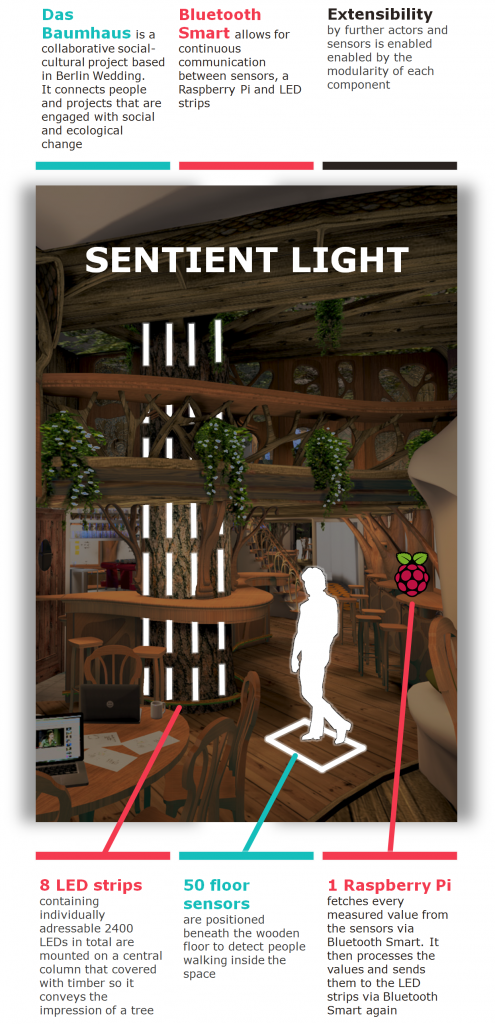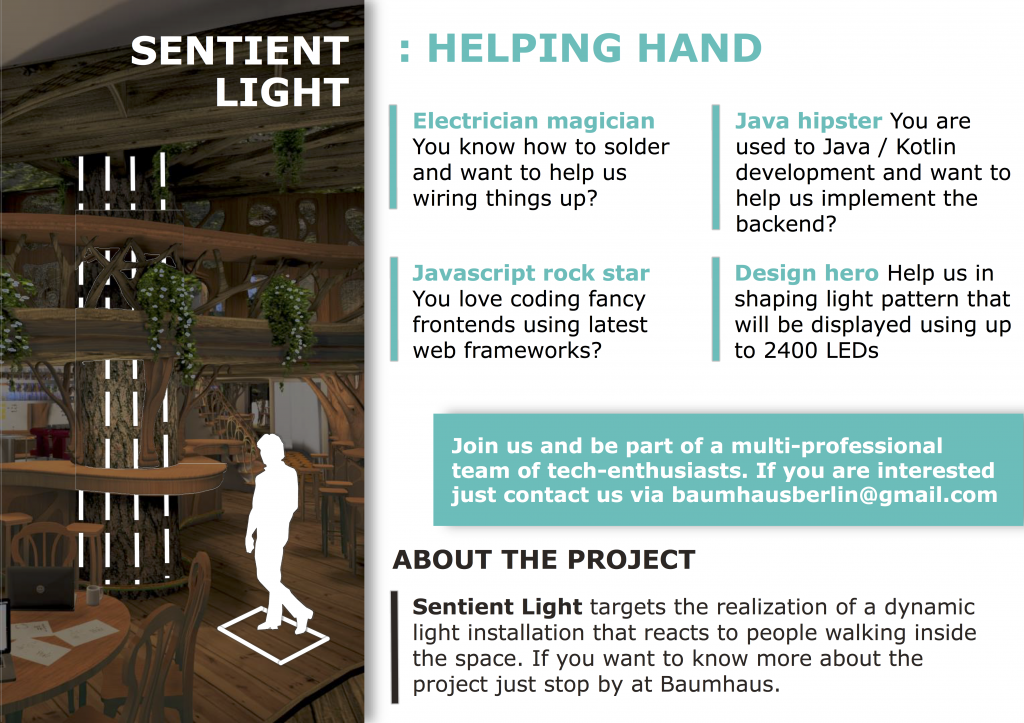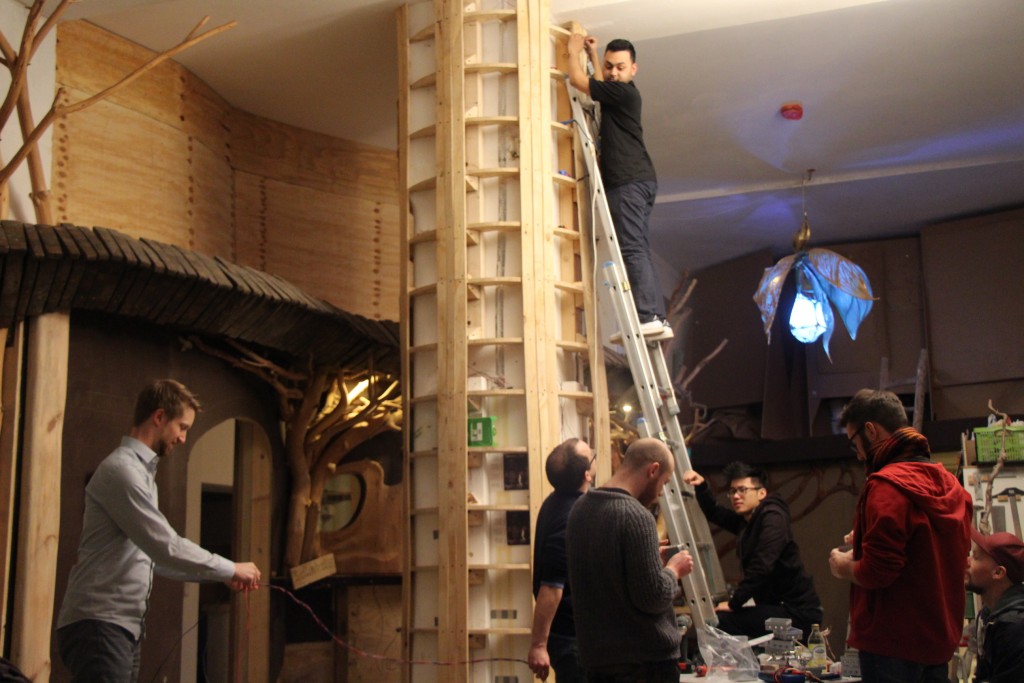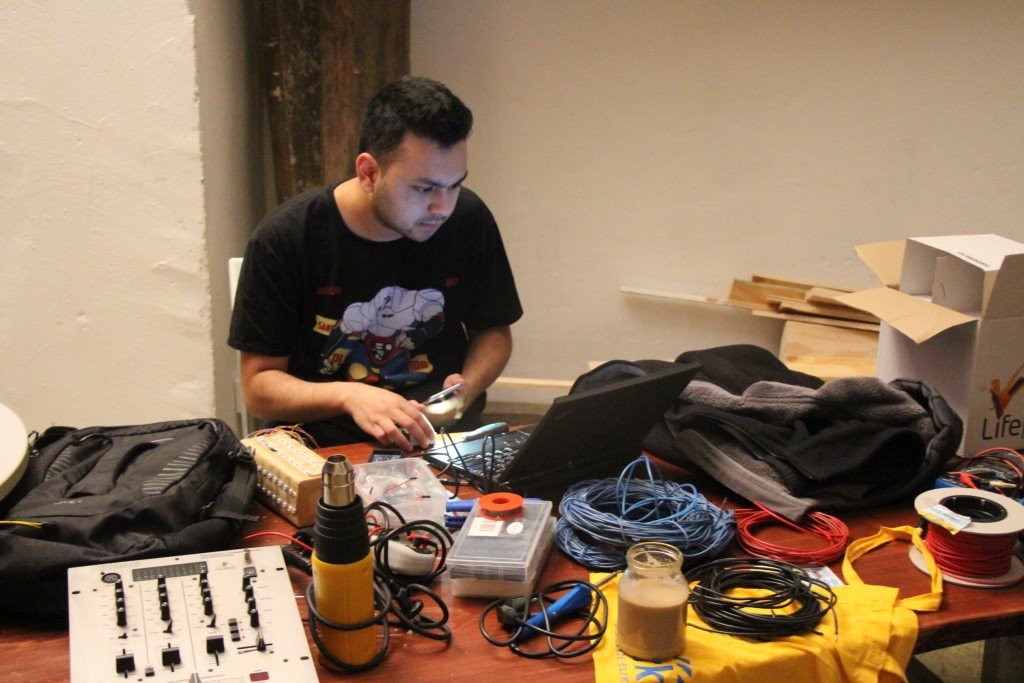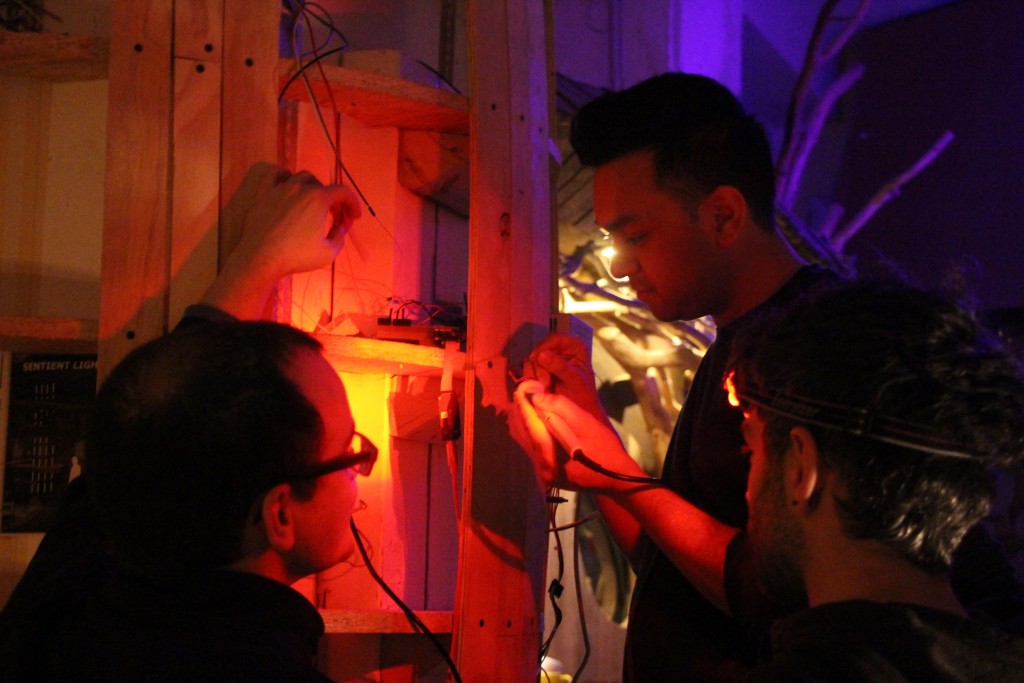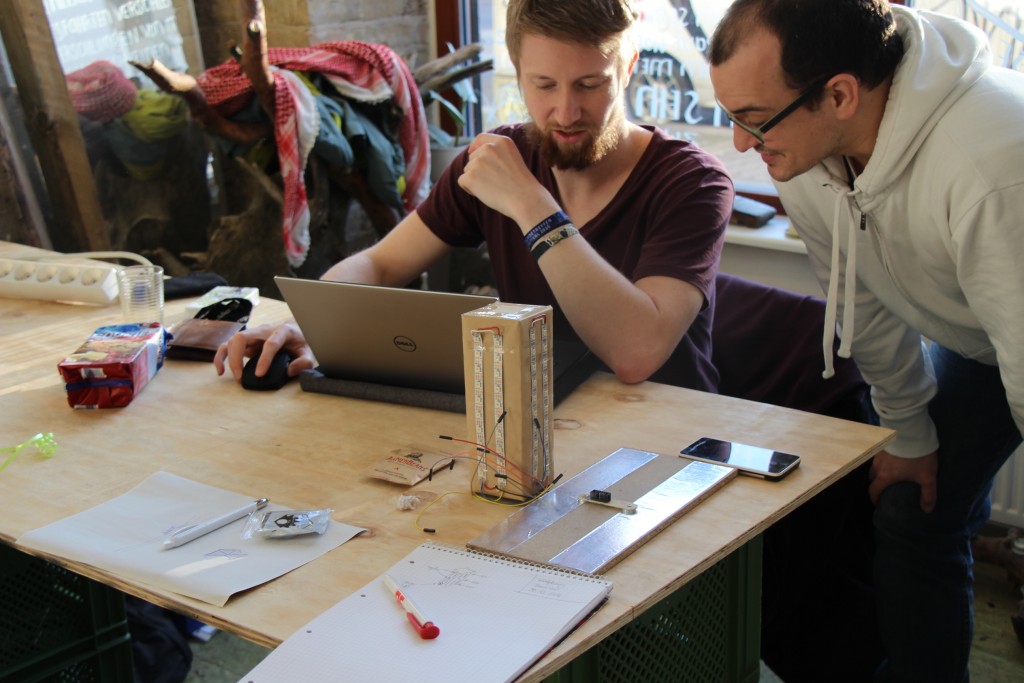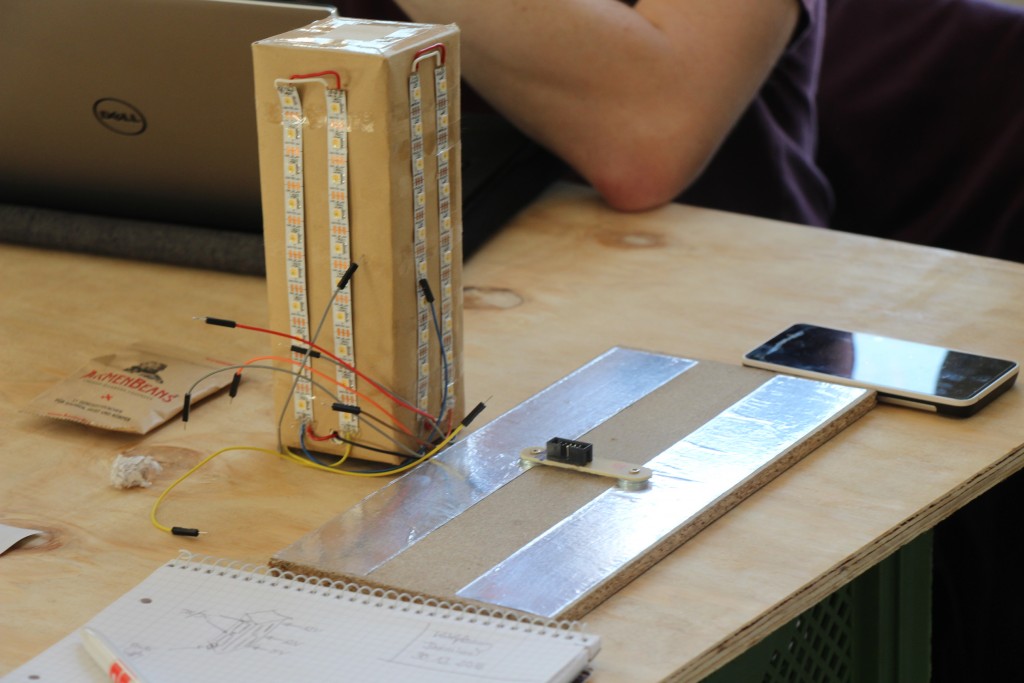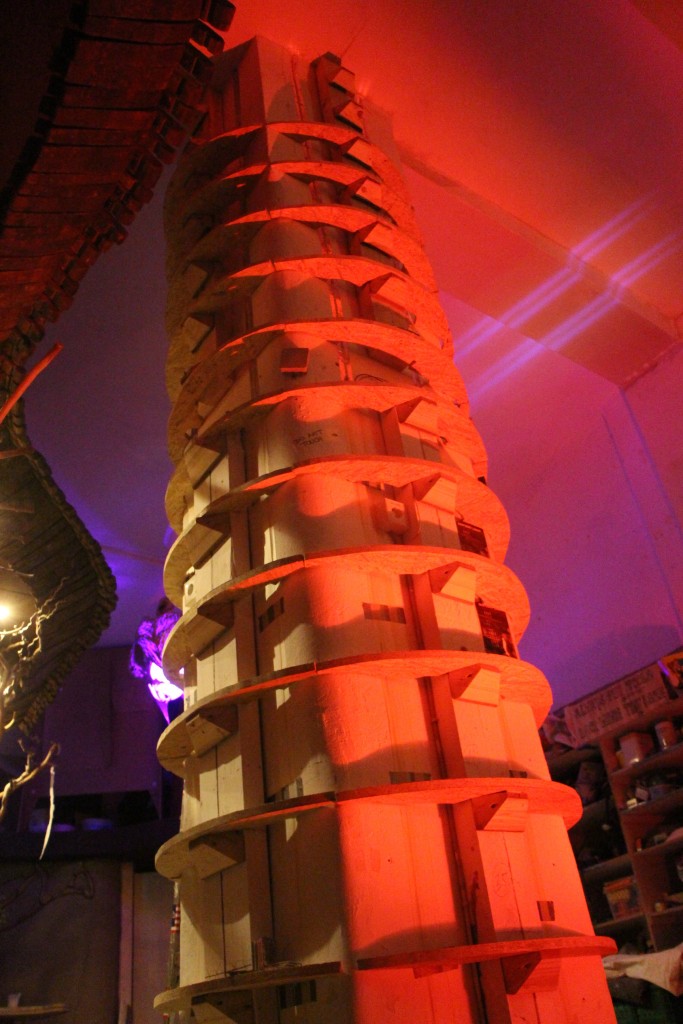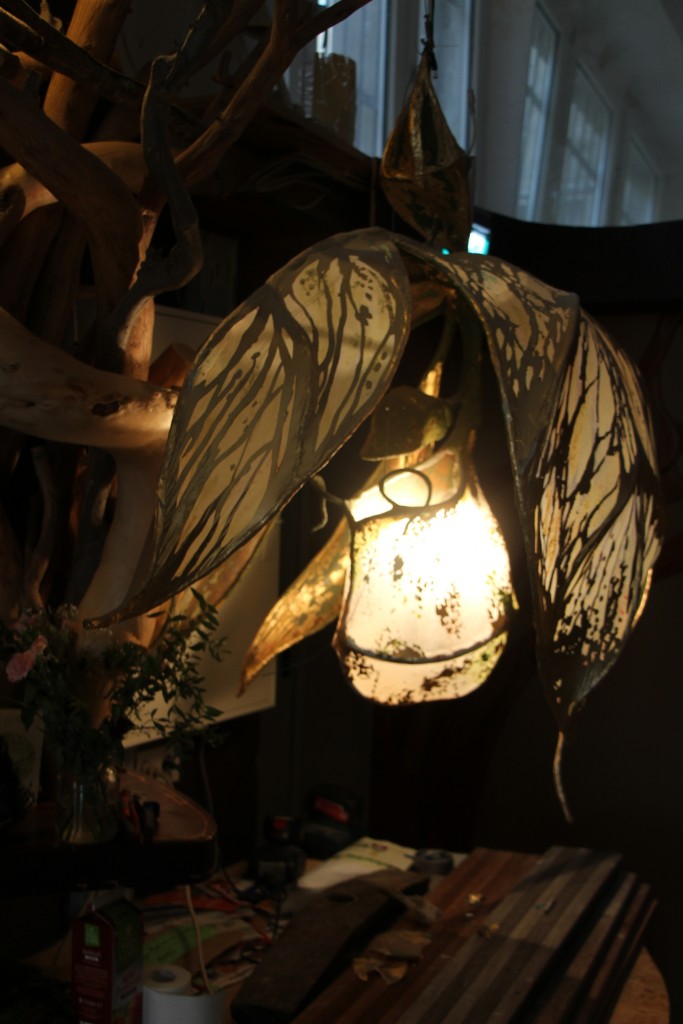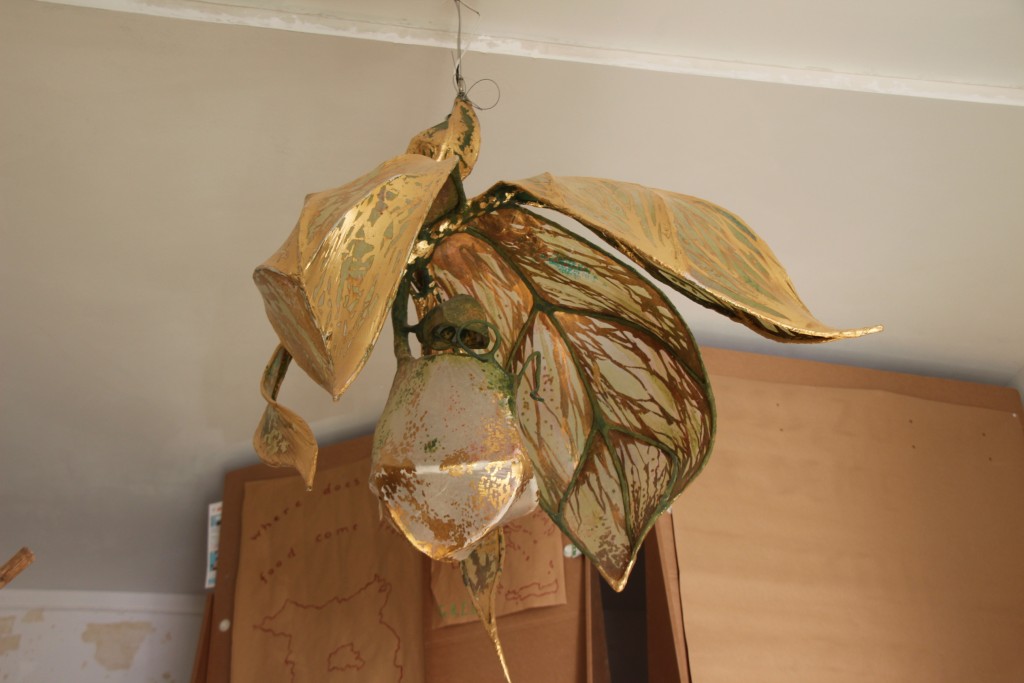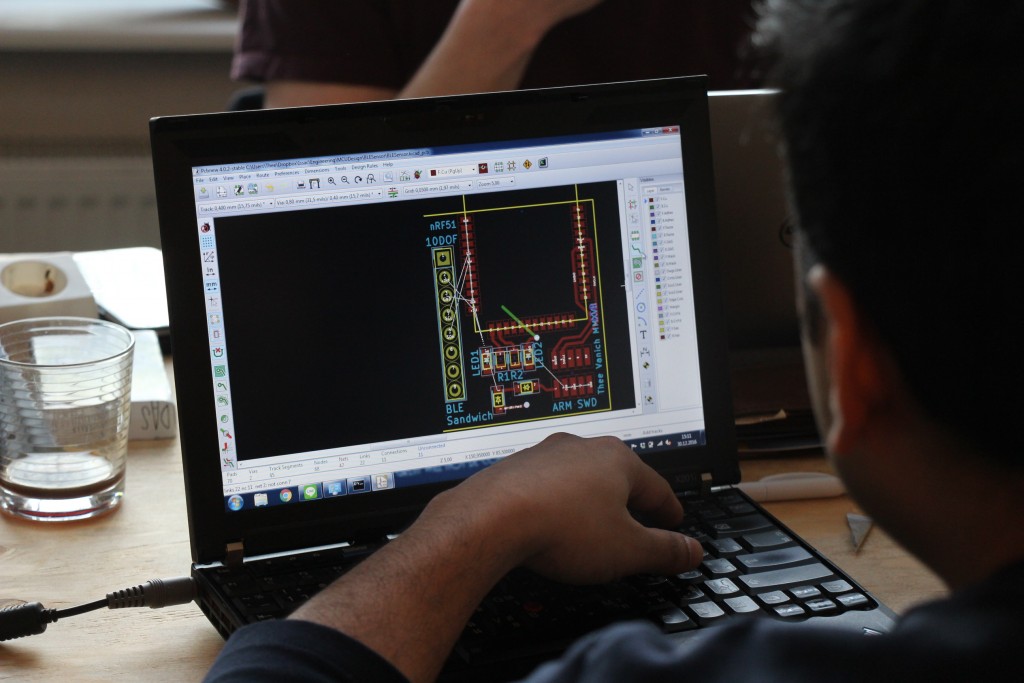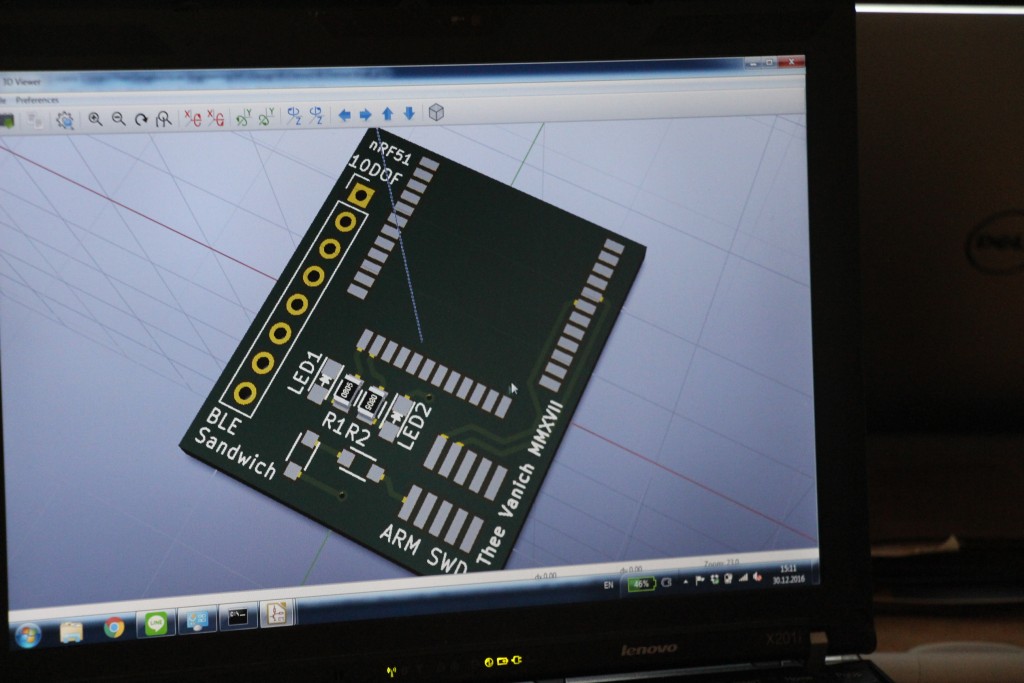And the winner is…
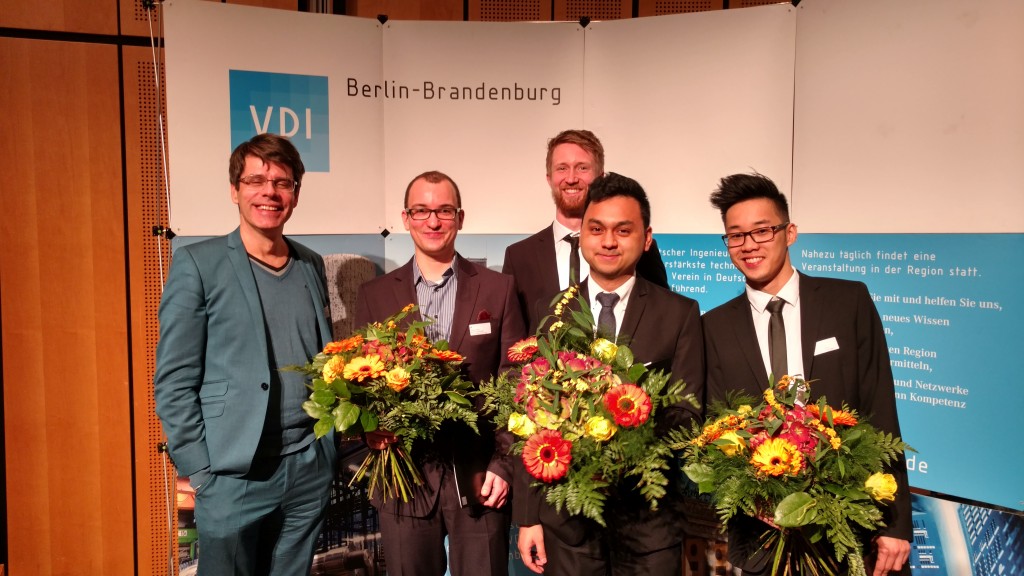
The team designed and built sensors into the Baumhaus main room floor to detect the presence and movement of people in the space and a control a system that allows people to influence the lighting in the space (the tree, Orchid Lamps and other installations) in purposeful and emergent ways.
The Baumhaus Sentient Light project convinced the jury and was awarded with the first price. None of us expected this kind of success. Even more we are all happy receiving this appreciation for our work.
In a brief speech Prof. Hausburg summed up the project as the integration of a technical solution in a social environment which directly reflects people’s dynamics and interactions.
Like the year before the Association of German Engineers (VDI) called for participation of engineering students from Berlin an Brandenburg on challenge Mensch und Technik (people and technology). Until 30 September 2016 teams of up to three students could hand in a poster and a brief description of a project having a strong connection to both people and technology.
Mid November VDI announced that our team is invited to the award ceremony – yeah! On 25 November the award ceremony took place at Ludwig Erhard Haus near Berlin Zoologischer Garten.
Team Sentient Light and prof. Hausburg
At the beginning of the event the most successful graduates of technical classes in Berlin and Brandenburg were honored. Speakers of the VDI emphasized the challenges to address and solve challenges of the modern and connected city. Presindet of Technische Hochschule Brandenburg (University of Applied Sciences) – Prof. Dr. Wieneke-Toutaoui – also outlined today’s possibilities as an engineering stundent to make the world a better place. In this context she also mentioned the increased but nonetheless low amount of female students in engineering.
Other speakers appealed to the students’ entrepreneurial spirit. One quote by Reid Hoffman stayed in memory
„If you are not embarassed by the first version of your product, you’ve launched to late.“
– Reid Hoffman, Co-Founder of LinkedIn
After that the top three award-winning teams were announced. At this point we did not yet not know which place we would be.
In reverse order the teams were asked to come on stage: third place went to a team of two students who made use of an Aldebaran Nao robot in order to translate spoken language into sign language. The second price went to one student who developed a technique to reduce airplane noise by using liners.
Finally all the three teams had the opportunity to present their concepts and posters in details and were able to answer questions. The increased interest in our project motivated us to present the different aspects in more detail.
Let us know if you are interested in joining our award winning Tech Team and help finish installing elements of our sentient lighting system or interesting projects we are developing.
Sentient Light: project vision
Sentient Light is a generic system which reactively controls LEDs. Using parameters from the surroundings, such as the presence and motion of people moving in the space, the system can change the color and intensity of light installations throughout the room. This makes the room is ‘intelligent’ in the sense that it can react to the behaviour of people in the space. We hope is that this technology can be used passively and actively by visitors to inspire more sentient and emergent behaviour.
The project is currently being realized in Baumhaus Berlin. Das Baumhaus is a project and event space in Berlin Wedding where people can meet, collaborate and work on social and ecological projects and other topics related to sustainable development and making the world a better place in general. Baumhaus also offers services from a sustainable solutions collective of over 100 interdisciplinary freelancers.
Dataflow
The general idea is to measure environmental parameters using sensors and to transfer measured values to a central processing device. There all the values will be aggregated and transformed by a mapping engine.
Transformed values in turn will be sent to actors which will use them as input values.
Bluetooth Smart
Sensors, actors and the processing device communicate via radio signals using Bluetooth Smart and span a network of things. It features a simple protocol stack and low energy consumption and is supported by most smartphones and tablets.
